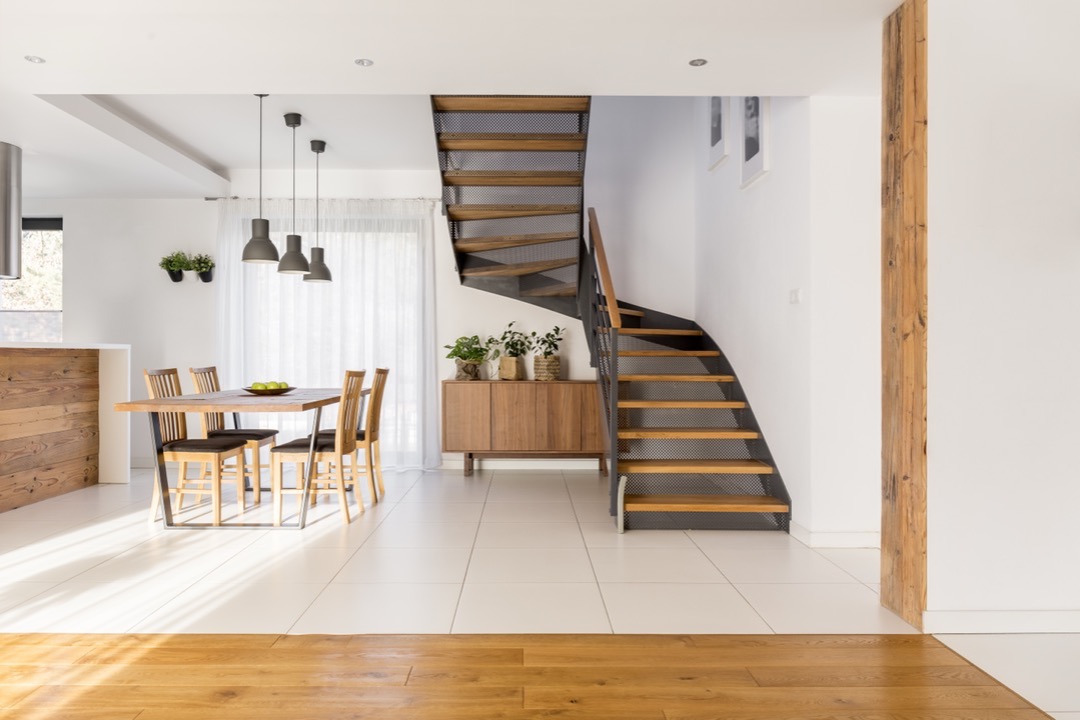Have you ever stared down at your dated tile floors, dreaming of the cozy warmth and timeless appeal of hardwood? Many homeowners find themselves in this position, pondering if transforming their tiles into a wood-covered haven is even possible. The answer? It’s a resounding “maybe!” But before you grab your hammer and a pile of planks, there’s a lot to consider. This guide will delve into the complexities of laying wood over tile, equipping you with the knowledge to make an informed decision and embark on a successful renovation journey.

Image: nasahome.co.jp
Putting wood over tile isn’t a simple “lay-it-and-forget-it” project. It involves a delicate dance of considerations, from the age and condition of your tile to the thickness and type of wood you choose. This guide will unravel the common myths and offer expert insights to help you determine whether wood over tile is the right choice for your home.
Understanding Tile and Wood Compatibility
The core question that drives this entire endeavor is: “Will wood flooring adhere properly to tile?” The answer lies in understanding the inherent differences between these materials. Tile is typically hard, non-porous, and generally flat. Wood, on the other hand, is soft, porous, and can be subject to expansion and contraction with changes in humidity.
The challenge arises because wood needs a solid, stable foundation for proper installation. Tile, due to its material properties, can sometimes present challenges. The smooth, glazed surface of tile often lacks the necessary “tooth” for a strong bonding between adhesive and the wood floor.
Factors Affecting Wood-Over-Tile Installation:
Several factors intricately intertwine to determine the feasibility of laying wood over tile. Let’s break down these key considerations:
1. Tile Subfloor Condition:
- Levelness: The tile subfloor needs to be level and free of significant undulations. Even slight bumps can lead to uneven floor installation and potential problems down the line.
- Cracks or Loose Tiles: Any cracks, loose tiles, or significant gaps in the tile will require repair before moving forward with the wood floor installation.
- Moisture Resistance: The tile needs to be water-resistant. This means your subfloor needs to be as well. Moisture can wreak havoc on wood floors, causing warping, cupping, and even rotting.
2. Tile Thickness:
- Thin Tile: If your tiles are thin (less than ½ inch), adding wood flooring can compromise the structural integrity of your floor. This can lead to weakness and even make the floor feel “springy” when walked on.
- Thick Tile: Thicker tiles provide a better support base for the new wood floor. However, the overall thickness of the combined layers could affect doorways and transitions to other rooms, meaning potential modifications might be needed.
3. Wood Floor Selection:
- Type of Wood: Engineered wood flooring, with its multiple layers and veneer top, is generally more stable and better suited for use over tile. Solid hardwood can be more prone to movement and may require careful planning and installation techniques.
- Thickness of Wood: The optimal thickness of the wood flooring will depend on the condition of the tile subfloor, the desired aesthetics, and structural considerations. A thicker wood floor might need additional steps to ensure it doesn’t raise your floor height beyond acceptable thresholds.
Methods for Laying Wood Over Tile:
Once you’ve assessed the factors mentioned above and determined that wood over tile is a viable option for your home, the next step is to choose the appropriate installation method.
1. Thinset Mortar:
- This method involves spreading a thin layer of mortar directly onto the tile surface. Once the mortar has cured, the wood flooring is adhered to the mortar, creating a solid bond.
- This approach is best suited for tile floors that are in good condition and offer a relatively smooth surface.
- Important Note: This method is not recommended for wood floors with a tongue-and-groove system, as the mortar can hinder the locking mechanism.
2. Plywood Subfloor:
- Installing a layer of plywood directly over the tile creates a solid and stable foundation for the wood flooring.
- The plywood serves as a moisture barrier, preventing moisture from the tile from reaching the wood.
- This method is ideal if you have concerns about the tile subfloor’s levelness or if you want to add a layer of insulation.
3. Furring Strips:
- Furring strips are thin wooden beams that are attached to the tile surface, creating a raised platform for the wood floor.
- This method is particularly useful for tile floors with uneven surfaces or when additional height is needed.
- By creating a gap between the tile and the wood flooring, furring strips can help with moisture management and allow air circulation.

Image: diy.stackexchange.com
Expert Insights and Actionable Tips:
- Consult a Professional: Before embarking on any wood over tile project, consult with a qualified flooring specialist. They can assess your situation, recommend the best installation method, and ensure adherence to building codes and safety regulations.
- Consider the Long-Term: Think about your furniture and appliances. Would the raised floor height interfere with anything?
- Choose the Right Wood: Opt for engineered wood flooring with a good moisture-resistant core. This will minimize the risks of warping and cupping due to changes in humidity.
Can You Put Wood Over Tile Floors
Conclusion:
Laying wood over tile can be a visually appealing and cost-effective way to transform your floors. However, careful planning, proper execution, and an understanding of the potential challenges are crucial for a successful and long-lasting result. By meticulously considering all factors and seeking professional guidance, you can embark on your flooring renovation journey with confidence, embracing the warmth and elegance of wood flooring in your home.






